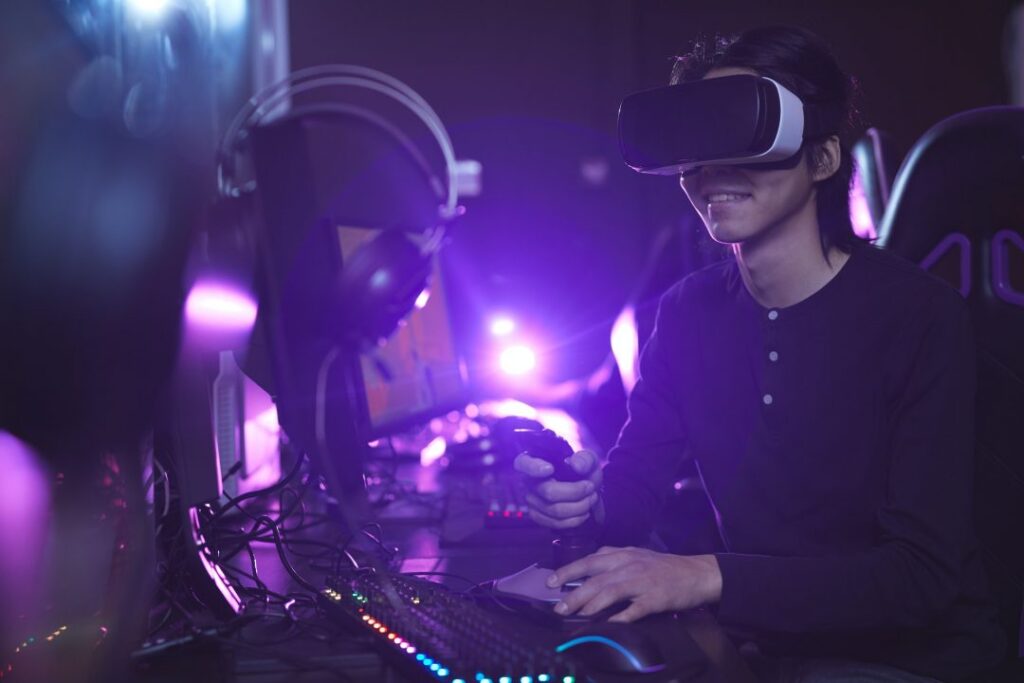
VR
VR is much beyond traditional interfaces and viewing a 2D screen. It surrounds the users with a realistic experience and allows them to interact with the 3D world, tremendously hiking their engagement and interaction. In a nutshell, VR has transformed computers into a vista of the artificial universe by amalgamating the four primary human senses – touch, hearing, vision, and even smell. However, the availability of affordable computing power, VR-compatible devices, and out-of-the-box content challenge the companies.
Since humans are visual creatures, the most significant distinction between immersive Virtual Reality systems and conventional user interfaces is frequently the display technology. Hence, Virtual Reality has incredibly focused on heightening our visual senses. So, the most prominent Virtual Reality component is the head-mounted display (HMD), undoubtedly. Although hardware, software, and wearable options are evolving, the future of VR is bright yet unknown.
Ideas like the HTC Vive Pro Eye, Oculus Quest, and Playstation VR are ahead of the curve. Still, competitors like Google, Apple, Samsung, Lenovo, and others might completely change the market with their new levels of immersion and devices. Whoever wins, HMDs have taken center stage when it comes to Virtual Reality technology since they are so easy to purchase and can be used in a living room, office, factory floor, or anywhere.
AR
A computer-generated image, video, or 3D model may be superimposed on a user’s perspective of the natural world using the technology known as Augmented Reality. Cameras or other device sensors are used in Augmented Reality to map and recognize the surrounding environment. TVuforia is a software platform with a broad range of features and capabilities that uses excellent, reliable, and technically astute computer vision-based image identification. Unity Technologies created the cross-platform Unity 3D gaming engine. PC platforms, consoles, mobile devices, and web plugins are used to develop video games. Augmented Reality enables a user to superimpose a computer-generated image, video, or 3D model on top of their view of the actual world.
